Paris Art: Alabaster Tears at Musée de Cluny
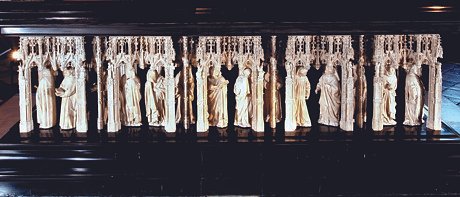
Mon 15 Apr 2013
In the metropolitan throng that is Paris, it’s sometimes easy to forget that this city is hundreds of years old and has seen as many changes in attitude and era as there have been centuries of occupants. But a trip to Musée de Cluny can instantly transport you back to the Middle Ages, with its ancient upholstery art, eroded sculptures and dazzling stained-glass rooms. The Paris art museum’s current exhibition, “Larmes d’Albâtre” (on view through June 3, 2013), showcases a series of sculptures from the 15th century that highlight the poignancy and skill so treasured in the art of medieval times.
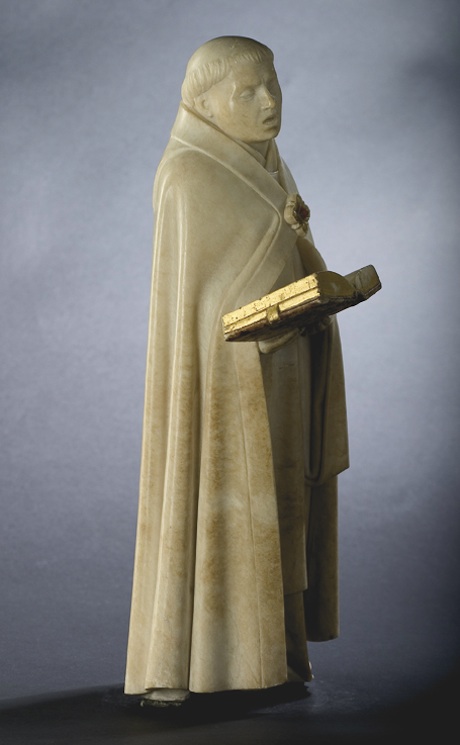
All photos © Musée des beaux-arts/François Jay/service presse.
Currently on display in the stunning former town house of the Abbots of Cluny, which dates back to the 1330s, this Paris art exhibition fills one room with a half-moon display of 39 sculptures depicting the mourners of the tomb of John the Fearless (how’s that for a title?). Well-preserved classic examples of 15th-century Burgundian sculpture, the collection was commissioned by John the Fearless’s son, Phillip the Good, in the 1440s after the Duke of Burgundy’s assassination. Spanish sculptor Jean de la Huerta began the project, creating the beginning of the collection as well as John the Fearless’s funeral helmet and the angels on his tomb, while his successor, Antoine Le Moiturier, completed the remainder of honoring sculptures. In a commendable display of teamwork, the figures are so cohesively designed and executed that it’s nearly impossible to tell which artist created which figurine.
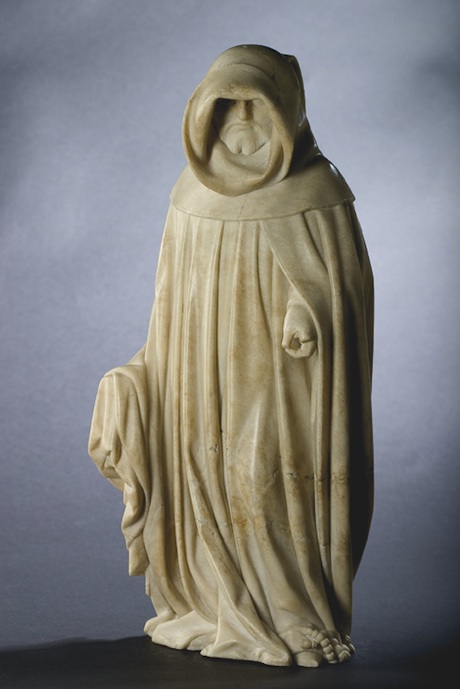
In this thoughtfully curated display, the group of sculptures is lined up like an actual funeral procession, and while the figures are small indeed, they are thankfully posed in increasingly high steps in a semicircle, against a neutral and increasingly dark gray background, enhancing the emotion of the scene. This formation allows the viewer to advance along with the mourners, through different emotional states ranging from tragically bereft to hopeful and full of prayer.
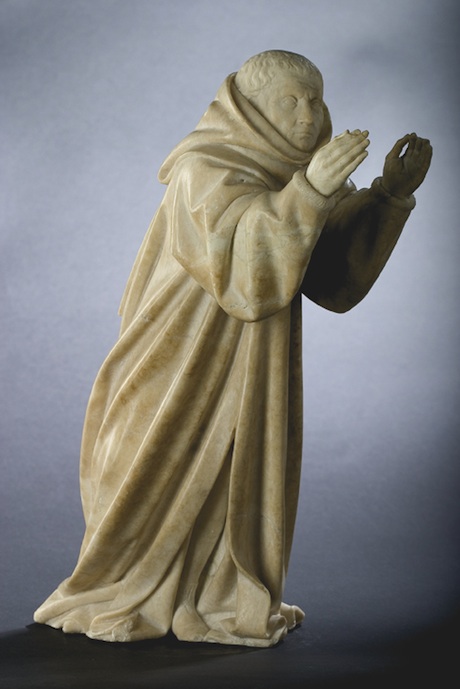
The robes of the mourners are carefully and lovingly carved, looking more like heavy linen than stone, and even with some of the most hidden, hooded faces, the sculpture peeking from inside is detailed and expressive. Though the figures are carved of white stone, one or two details on almost every one are subtly painted to highlight their differences—a sienna pot of incense here, a ruddy gold rosary there. The most covered faces are placed in the darkest spots, while the mourners with their eyes raised to the heavens are situated symbolically in the highest and best-illuminated places. With the exception of two Bible readers who share their book, the mourners are totally isolated from one another, alone yet joined in their grief.
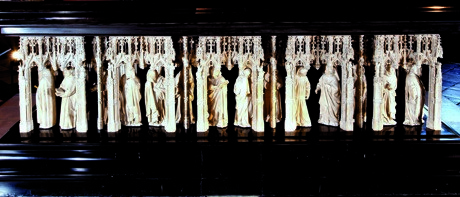
The sculptures in their “natural habitat,” which is adorning the tomb of John the Fearless.
This historical and stirring exhibition has made a trip of the world, traversing seas and mountains to display its 39 alabaster sculptures all over North America and Europe, and makes its final stop at Musée de Cluny, where it will be on view until June, when the collection heads back to its permanent home at the Musée des Beaux-Arts de Dijon. For a rare chance to see the figures of this unique exhibition in an equally unique setting, don’t miss “Larmes d’Albâtre.”
Related Link
Musée de Cluny
Editor’s note: Can’t get enough of GG2P? Be sure to follow us on Facebook, Twitter, Tumblr, Pinterest and Instagram.